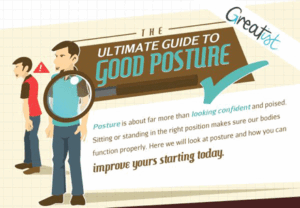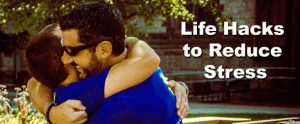Perfect Posture is a False Expectation
Take a moment to google ‘posture’ and you will likely be hit with 1000’s of sites that will tell you what you need to fix.
You’re ‘over pronating’ when you run.
Your arms cross your midline.
You’re are knocked kneed.
Your spine is curved (scoliosis).
All of these so called biomechanical and postural ‘dysfunctions’ are supposed to be considered red flags and if they are not addressed, you are likely to get injured. So, riddle me this Batman; How is one of the world’s greatest marathoners a text book ‘over pronator’ or why does one of the greatest female marathoners look like her knees are about crash into one another and her arms are about to swing into her face. How is it that one of the first people to dead lift over 5X their own body weight had a huge ‘S-Curve’ to their spine? Why? Because, of the role of expectation.
Expectations have a huge impact on physiological function. If people are continuously told that sitting all day in a flexed position or over pronation when they run will cause pain, then it’s likely it will through what’s known as sensitization. Bad information can actually cause someone to have pain where they otherwise may not ever experience pain if they never knew that doing something may be the cause. In other words, our brains play a pivotal role in the determination of how we understand and experience pain. Pain is opinion of the brain, an output. It is not an input. Hence, professionals need to be mindful of not only the way they apply therapeutic touch, but in the choice of their words.
Biomechanics and posture are important when we start to consider things like extreme loading activities where your form can greatly influence tissue injury. As an example, let’s consider jumping off of a high structure and landing. If you don’t know how to properly land, you can risk placing an abnormal amount of stress on tissues that could lead to an injury. Another consideration when understanding the importance of posture would be a habit. A habit may involve the way you sit over a prolonged period of time. If you have pain when you sit in a flexed or slouched position, yet you consistently find yourself falling back into that same position. In this case, you would want to adjust this ‘habit’ to avoid persisting into the pain and sensitizing yourself to it. Even standing in ‘perfect posture’ or military, can be uncomfortable for anyone, yet many ‘posturologists’ (yes, it’s a thing), will try and tell you that you should stand with your bones stacked. Who does that???
To better understand the role of expectation, take the idea of our taste buds. If our taste buds are supposed to determine if we are biting an apple or an onion, then we would assume they are controlled through sensory input alone. So why is it when you reach for a drink from an opaque glass of what you THOUGHT was orange juice and instead, it was milk, do you think it’s so nasty? If it was simply sensory driven, your taste buds would immediately know it was milk and you would not be so repulsed. Our expectations or beliefs supersede any supposed sensory input being received and in turn the output is a gag reflex.
That is the whole idea behind the role of expectation. This is why, in spite of all the amazing technology and ergonomic solutions, pain still persists in the work place. This is because what is being addressed is not realistic. What should be encouraged more than anything is movement. The more varied movements we are making throughout our daily lives, the less likely we are going to experience pain. If you partner this with the desensitization of pain expectations, you will start to see a dramatic change in how you physically experience day to day life.
Ready to #feelbetter?
You're just a click away from a wicked good massage!
-

60 Minute Massage Gift Card
$170.00 Add to cart -

90 Minute Massage Gift Card
$255.00 Add to cart -

Mini Aer Small Room Air Purifier
$149.00 Add to cart -
Sale!

Thera-Pearl Sports Pack/Hot Cold
Original price was: $14.99.$12.99Current price is: $12.99. Add to cart -

3 Somadome Sessions Gift Card
$135.00 Add to cart -

TheraBand CLX Connective Loop
$14.99 Select options -

6 Somadome Sessions Gift Card
$270.00 Add to cart -
Sale!

Biofreeze
Original price was: $14.99.$12.99Current price is: $12.99. Add to cart
Passion Mountain
I was at an event recently and was asked by somebody how I could STILL be so passionate for what I do. He said, “What I mean is that you talk about what you do with the passion of child flipping through a new pack of baseball cards. I wish I was that passionate about…
Read MoreFish You Should Scale Back On
New Englander’s love their seafood and we deepen our love affair every summer when our favorite crustaceans, ‘lobstah’ is a plentiful. But what is the best seafood for us and what are the ones that we should be staying away from regardless of how yummy they may be? Monterey Bay Aquarium has combined data from…
Read MoreSports are a Great Metaphor
It’s no secret that my life has always revolved around athletics. From my early days playing pop warner football, through my college years of lacrosse and on into the various community leagues since, being part of a team has always been where I feel most comfortable. What I enjoy most about being part of a…
Read MoreWhat is an Expert?
“An expert is someone widely recognized as a reliable source of technique or skill whose faculty for judging or deciding rightly, justly, or wisely is accorded authority and status by their peers or the public in a specific well-distinguished domain.” – Wikipedia This past month I flew to Atlanta to present a few classes in…
Read MoreThe Power of a Hug
Originally Posted 5/1/2014; following the 1 year anniversary of the Boston Marathon Bombings and our mission to rebound after these horrible attacks on our city. We helped orchestrate the ‘One Run for Boston’; a 3328.2 NON-STOP running relay from LA to Boston, raising over $500K for the victims and survivors of the events of 4/20/2013.…
Read MoreTips from the Table
Without fail, every marathon season, I am asked by my patients, what kind of advice I would offer up to them as they prepare to run the Boston marathon. I first admit that I have never (nor will ever) run a marathon, but given my unique insight of spending 1000’s of hours alone in a…
Read MoreShoulder Impingement
The glenohumeral joint is a highly complex articulation. It has the greatest range of motion of any joint in the body. However, its increased motion occurs at the expense of stability, requiring the soft tissues to play a more critical role in maintaining joint integrity. As a result of increased mechanical demands, numerous soft-tissue injuries…
Read MoreTrain, train, train. Train of fools.
In my seventeen years as a massage therapist, I am still amazed by some of the things I see in my office. Being situated 1/10th of a mile from the finish line of one of the most prestigious marathons in the world, the Boston Marathon, we see more than our fair share of runners coming…
Read MoreAchilles Tendon Disorder
Achilles Tendon Disorder Massage therapists see many clients with active lifestyles. Running, jumping, dancing, climbing, or any number of other activities can put serious stress on the Achilles tendon (AT). AT disorders also can contribute to biomechanical disorders in the foot and lower extremity. That is why it is important for the massage practitioner to…
Read More


